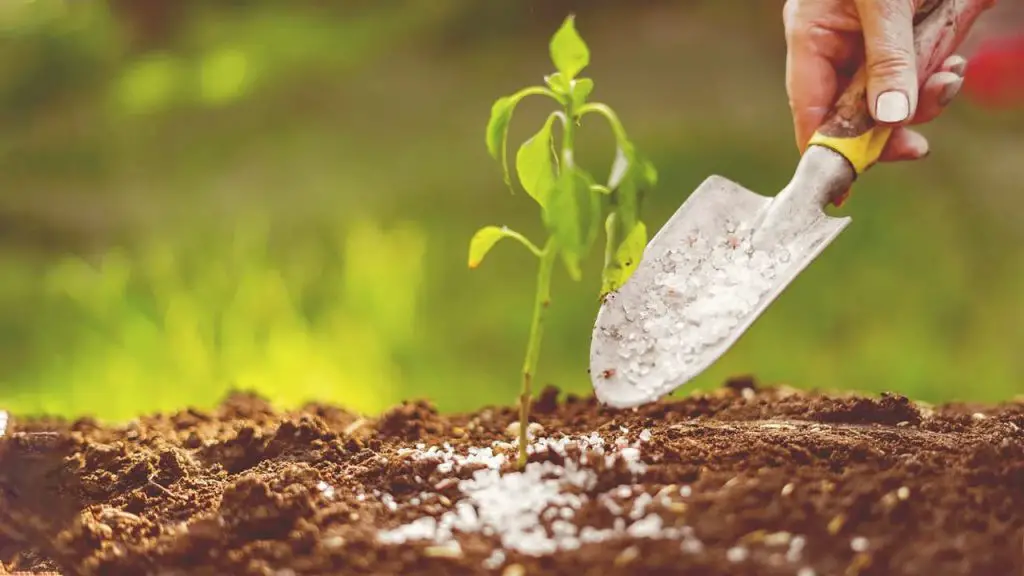Do you want to learn how to add phosphorus to soil? If so, you’re in the right place! In this article, we will discuss what phosphorus is, why it’s important for plants, and how to add it to your garden.
We’ll also provide a few tips on how to boost your soil’s phosphorus levels naturally. Soil with adequate levels of phosphorus helps plants grow big and strong – so read on for all the details!
Why Do You Need To Add Phosphorus To The Soil?

Phosphorus is an essential nutrient for plant growth. It plays a role in several important processes, including photosynthesis, cell division, and the metabolism of energy. Without sufficient phosphorus, plants will not be able to thrive.
Phosphorus is typically added to soil in the form of phosphate rock. This rock is mined from deposits all over the world and then crushed into a powder. The powder is mixed with water to create a slurry, which can be applied to fields through irrigation systems.
In general, crops will need to be fed phosphorus every two to three years to maintain optimal growth. However, the exact timing and amount of phosphorus that needs to be added will vary depending on the type of crop, the climate, and the soil conditions.
Adding too much phosphorus can lead to environmental problems, so it is important to test the soil regularly and follow the recommendations of a qualified agronomist.
Benefits Of Adding Phosphorus To Soil
Adding phosphorus to soil has a number of benefits for plants.
For one, phosphorus is essential for photosynthesis, the process by which plants convert sunlight into energy. In addition, phosphorus helps to promote root growth and strengthens plants’ resistance to disease.
It also increases the efficiency with which plants use water, making it an important nutrient for drought-prone areas.
Finally, phosphorus can help to increase the overall fertility of the soil, making it more productive and better able to support plant growth.
Consequently, adding phosphorus to soil is an important step in ensuring optimum plant health.
How To Add Phosphorus To Soil?
There are a number of ways to add phosphorus to the soil. One common method is to use phosphate rock, which is mined and then ground into a powder. This powder can be added directly to the soil or mixed with other fertilizers.
Another option is to use bone meal, which is made from ground-up animal bones. This is a relatively inexpensive way to add phosphorus to the soil, but it can take some time for the nutrients to become available to plants.
Finally, sewage sludge can also be used as a source of phosphorus. However, this method is not recommended for home gardeners due to the potential health risks involved.
How Do You Know If Your Soil Has An Adequate Level Of Phosphorus Already?
Phosphorus is an essential nutrient for plant growth, and it is often added to soil in the form of fertilizer. However, too much phosphorus can damage plant life and pollute waterways.
For this reason, it is important to test your soil before adding phosphorus-based fertilizer. The easiest way to do this is to buy a soil testing kit from a garden center or hardware store. Simply follow the instructions on the kit to collect a sample of your soil, and then send it off to a laboratory for analysis.
The results will tell you how much phosphorus is already present in your soil and will give you guidance on how much fertilizer to add if any. By taking this simple step, you can ensure that your plants get the nutrients they need without damaging the environment.
Potential Drawbacks Associated With Adding Phosphorus To Soil
Phosphorus is an essential nutrient for plant growth, but it can also have harmful effects on the environment if it is not used carefully. When phosphorus is added to soil, it can increase the risk of water pollution.
Phosphorus that washes off of fields can end up in lakes and rivers, where it can promote the growth of algae.
While some algae are beneficial, too much can lead to an overgrowth that depletes oxygen levels and suffocates fish and other aquatic creatures.
In addition, phosphorus runoff can also encourage the growth of invasive plant species that crowd out native plants.
As a result, it is important to use phosphorus fertilizer judiciously to avoid these potential negative impacts on the environment.
What Is The Fastest Way To Increase Phosphorus In Soil?
Phosphorus is one of the three essential macronutrients for plant growth, along with nitrogen and potassium. It helps to promote root growth, blossom production, and fruit ripening.
For this reason, phosphorus is often added to fertilizers and soil amendments. However, too much phosphorus can be harmful to plants and the environment. As a result, it is important to only use as much as needed and to test soil levels regularly.
One way to increase phosphorus levels in the soil is to add bone meal or rock phosphate. Bone meal is made from pulverized animal bones and provides a slow release of phosphorus.
Rock phosphate is a natural mineral that contains phosphate rocks. It breaks down slowly in the soil, making it available to plants over time.
Both bone meal and rock phosphate are excellent sources of phosphorus for gardens and can help to ensure healthy plant growth.
What Precautions Are Necessary While Adding Phosphorus To Soil?
Phosphorus is an essential nutrient for plant growth, but it can also be detrimental to water quality if it leaches into groundwater or runs off into surface waters. For this reason, it is important to take precautions when adding phosphorus to the soil.
One way to reduce the risk of phosphorus runoff is to apply it only to areas where plants are actively growing. This ensures that the phosphorus will be used by the plants and less likely to leach into the environment.
Another precaution is to avoid applying phosphorus during periods of heavy rainfall or close to bodies of water, as this increases the chances that it will wash away.
By taking these simple steps, you can help protect the environment while still providing your plants with the nutrients they need to thrive.
Additional Contents



